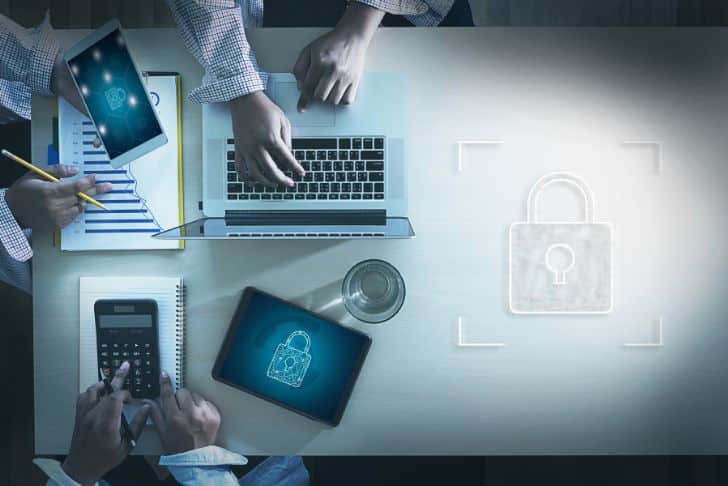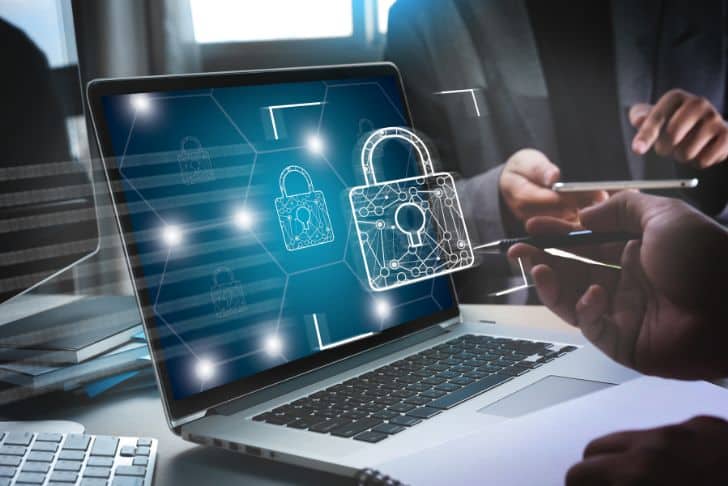Imagine being able to seamlessly manage costs, improve security, meet regulatory obligations, and be more appealing to potential partners, all about to become your business reality. Dealing with compliance obligations doesn’t have to be an administrative nightmare draining up to 40% of your IT security budgets. With the cybersecurity industry facing changes in cyber standards, a scarcity of skills, and static compliance budgets, there’s no better time than now to explore automation in compliance. Add to this the ongoing COVID-19 pandemic bringing with it increased online threats and regulatory requirements, and the need for innovation becomes even clearer. This is where “Automating Compliance: The Future of Cybersecurity Management” comes into play, presenting compliance automation as a viable solution for businesses.
By integrating automated evidence collection, reporting, and risk assessment, you’ll not only meet your security and compliance needs but also elevate your business partnerships and bolster your security posture. Happy reading!

Understanding The Need for Compliance Automation
Compliance obligations can be a significant business cost, consuming up to 40% or more of IT security budgets for many firms, as per a report by Coalfire and Omdia. This rising cost is making it difficult for organizations to keep up with the demands of maintaining compliance.
Increasing compliance obligations and costs
Factors leading to increasing compliance burdens include rapidly evolving cyber standards, a skill shortage in the cybersecurity field, and stagnant compliance budgets. As a consequence, there is a growing need for alternative solutions that can streamline these costs without compromising the company’s safety and soundness.
Growing cyber threats and changing standards
Every organization needs to adhere to specific cybersecurity standards to protect their data and transactions. With the rise of cyber threats and constantly changing standards, it is becoming more challenging for companies to stay compliant and secure. These threats and the need to adapt to changes place an enormous burden on firm’s resources.
Tension between achieving security and maintaining compliance
Often, achieving and maintaining security and compliance can appear to be contradictory goals. Security protocols may seem to interfere with compliance, and vice versa. This tension can create difficulties for an organization, especially those without a dedicated compliance department.
Impact of COVID-19: Compounding Cybersecurity and Compliance Challenges
The COVID-19 pandemic has increased cyber threats, privacy issues, and regulatory requirements, further complicating the compliance scenario for organizations.
Increased cyber threats due to remote work
The pandemic-induced shift towards remote work has heightened the risk of cyber threats. As a result, IT departments are under increasing pressure to ensure the security of systems and data, while simultaneously meeting compliance standards, a challenge that has never been more severe.
Emergence of new privacy risks
As more people work remotely and rely on the internet for most of their tasks, new privacy risks have emerged. Protecting business data and employee information while striving to maintain regulatory compliance is a substantial challenge in these times.
Enhanced regulatory requirements necessitated by pandemic
The pandemic has resulted in new regulatory requirements, enhancing compliance issues for companies across all sectors. These enhanced requirements mean that companies must reassess and reform their compliance and security strategies.
The Growing Role of Compliance Automation in Cybersecurity Management
Compliance automation, or the use of technology to streamline compliance activities, is increasingly seen as the answer to these challenges.
Understanding compliance automation
Compliance automation involves using technology to automate compliance tasks, thus reducing the burden that compliance places on resources. It ensures that organizations are consistently following the rules they need to abide by while reducing the chance of human error introducing vulnerabilities.
Potential of technology to streamline compliance activities
Compliance automation can co-operate with various technologies to streamline compliance activities. When implemented correctly, it can reduce not only the time required for these tasks but also the potential for errors, making organizations more efficient.
Benefits of Automating Compliance
Automating compliance tasks can lead to significant efficiencies, opening up a variety of opportunities for companies.
Cost and time efficiency in evidence collection
Automating evidence collection can lead to substantial cost savings and shorter timelines. This efficiency can result in organizations becoming more attractive to prospective business partners.
Increased attractiveness to business partners
Improved cost-efficiency and time-efficiency are attributes that are attractive to potential business partners. Companies that are efficient and compliant are low risk and appealing to forge connections and partnerships with.
Effective meeting of security and compliance needs
Automating compliance is a useful tool in marrying security and compliance requirements. The effective burden reduction on human resources can help businesses meet both their security and compliance needs.

Strategic Use of Automated Compliance Solutions
Several strategies can be employed to reap maximum benefits from automated compliance solutions.
Automated reporting and risk assessment mapping
Automated reporting and risk assessment mapping can help companies align their compliance requirements with their risk posture. By doing so, they can meet their security and compliance needs more effectively.
Hassle-free evidence collection
Automated solutions can significantly simplify the process of evidence collection, making it smooth and hassle-free. This, in turn, frees up resources to focus on other crucial tasks.
Role of compliance solutions in ensuring security and compliance
Deploying automated compliance solutions can play a significant role in ensuring both security and compliance needs are met. Moreover, they can bring about increased transparency and visibility into the organization’s risk management practices.
Challenges in Implementing Compliance Automation
Despite the benefits, implementing compliance automation can present its challenges.
Seamless integration of solutions within business operations
One key challenge is that of integrating solutions within business operations seamlessly. Organizations need to ensure that the introduction of compliance automation does not interfere with existing workflows or employee productivity.
Flagging changes affecting internal control
Another challenge lies in flagging changes that could affect internal control. Compliance automation requires a well-defined and regularly updated list of controls and understanding of the various factors that could lead to changes.
Skill shortage in managing automated systems
The lack of skills in managing automated systems is a significant barrier to realizing the full potential of compliance automation. Organizations need to invest in training or hiring individuals who can effectively leverage technology for compliance.

Future Trends in Compliance Automation
Looking ahead, several promising technologies could significantly enhance compliance automation.
Adoption of artificial intelligence in compliance automation
Artificial intelligence (AI) offers significant promise in enhancing compliance automation. AI can streamline the process and increase accuracy, thereby contributing to better management of compliance.
Use of machine learning for proactive risk identification
Machine learning can be deployed to identify risks proactively, enhancing the effectiveness of a compliance regime. By learning patterns and predicting possible outcome scenarios, machine learning can contribute to a stronger compliance posture.
Potential of blockchain for secure and transparent transactions
The blockchain can also play a significant role in bolstering compliance automation. The technology’s inherent transparency makes it ideal for ensuring secure transactions while maintaining extensive records necessary for compliance.
Importance of Vendor Expertise in Compliance Automation
Selecting the right vendor can significantly influence the organization’s success in compliance automation.
Choosing the right vendor for compliance automation
Choosing the right vendor is vital for organizations considering compliance automation. Organizations should consider the vendor’s track record, technology maturity, and expertise in the area of compliance.
Evaluating vendor’s technological expertise and adaptability
Evaluating vendor’s technological expertise and adaptability is essential. The vendor should demonstrate a deep understanding of the technology, plus the ability to modify their product to suit the specific needs of your organization.
Vendor’s support in ensuring smooth implementation
The vendor’s role does not end with the sale; they must offer adequate assistance to ensure smooth implementation of their solution. Adequate support from the vendor can determine the automation process’s success, influencing the company’s compliance posture.
Building A Strong Security Posture Through Compliance Automation
Through strategic implementation, compliance automation can function as a powerful tool to build a robust security posture.
Balancing security and compliance
Balancing security and compliance needs is crucial for organizations. Through compliance automation, organizations can achieve a harmonious balance between optimizing efficiency and maintaining their standards without sacrificing either.
Compliance automation in fostering robust security postures
Compliance automation can foster a robust security posture within an organization. It enables the organization to meet compliance and security needs simultaneously with fewer resources, thereby strengthening the overall security posture.
Benefits of strong security posture on business partnerships
A strong security posture yields dividends beyond the organization itself—it also serves to attract business partnerships. Firms with robust security postures can demonstrate reliability, thereby increasing their appeal to business partners.
Conclusion: The Future of Compliance Automation
The future of compliance automation looks promising, with enterprises predicted to attain improved efficiency in managing compliance needs.
Predicted growth in adoption
Given its potential to streamline procedures and increase efficiency, compliance automation’s adoption is likely to swell in the future. This trend is expected to simplify the cumbersome task of maintaining security and compliance simultaneously.
Impacting regulatory norms and business practices
As compliance automation becomes more widespread, it will influence both regulatory norms and business practices. Regulators may embrace these technologies to enhance their compliance initiatives, while companies may incorporate them into daily operations.
The evolving merger of cybersecurity and compliance automation
The field of compliance automation is expected to evolve alongside cybersecurity— the two becoming more interwoven over time. As this blend happens, organizations must keep pace and adapt to harness the full potential of this union.
